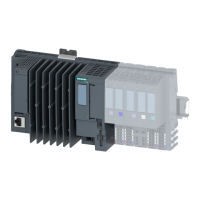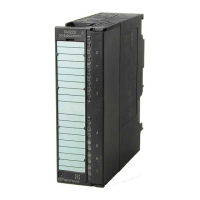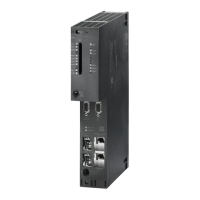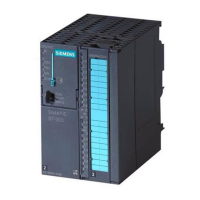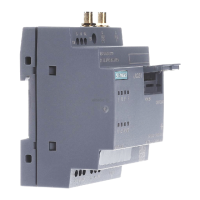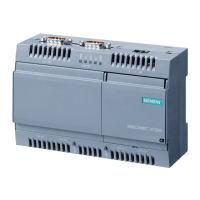Product overview
2.2 Hardware properties and firmware functions
CPU 1512C-1 PN (6ES7512-1CK01-0AB0)
Manual, 12/2017, A5E40898741-AA
33
Application The outputs are suitable for, e.g. solenoid valves, DC
contactors and indicator lights, or also for signal trans-
mission or proportional valves.
Driver blocks X11 The digital outputs of the digital onboard I/O X11 have
driver blocks with parasitic diodes. In principle, parasitic
diodes have an effect when switching off inductive
loads such as freewheeling diodes. The shutdown volt-
age is limited to -0.8 V. Therefore, the demagnetization
of inductive loads takes longer and can be approxi-
mately calculated using the following formula.
(tau= time constant, L = inductance value,
R = ohmic resistance value)
After the expiration of a period of 5 * tau, the current
has decreased in effect to 0 A due to the inductive load.
The maximum value is derived from:
tau = 1.15H / 48 Ohm = 24 ms. After
5 * 24 ms = 120 ms, the current has decreased in effect
to 0 A.
For comparison: With standard modules, inductive
shutdown voltage is limited, for example, to Vcc -53 V
(supply voltage – 53 V), which causes the current to
decrease to 0 A after about 15 ms.
Section Terminal and block diagram
of the digital on-board I/O (Page 90)
Driver blocks X12 The driver blocks of the outputs from the digital inboard
I/O X12 have no freewheeling diodes.
The cut-off voltage is -29 V. Inductive loads are there-
fore demagnetized faster than for X11.
If ground is interrupted, no unwanted current flows
through the digital outputs to the ground.
Simultaneous use of technology and standard functions
You can use technology and standard functions at the same time, provided the hardware
allows this. For example, all the digital inputs not assigned to the counting, measuring or
position detection or PTO technology functions can be used as standard DI.
Inputs to which technology functions are assigned can be read. Outputs to which technology
functions are assigned cannot be written.
Parameter assignment and structure of the parameter data records of the digital on-board
I/O (Page 175)
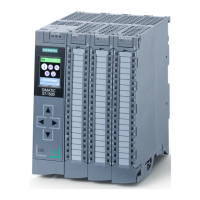
